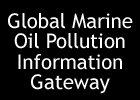|
The
full text of the following description of offshore drilling
in Australian waters can be on the education site of
the Australian Petroleum Production and Exploration
Association (APPEA). See also information
on exploration and drilling, including technical description
of platforms and production methods, on the site of
the United Kingdom Offshore Operators Association (OKOOA),
as well as the report "Environmental
management in oil and gas exploration and production",
by UNEP IE and the E&P Forum.
"Drilling
or digging for oil has occurred in one way or another
for hundreds of years. The Chinese, for instance, invented
a bamboo rig to obtain oil and gas for lighting and
cooking. But only in the last 40 years has humankind
been able to efficiently extract petroleum from beneath
the seas — an achievement to rank with this century's
mightiest technological triumphs.
The
search is difficult, extremely expensive, and often
fruitless. Locating an oil and gas "trap"
(as it is known) and extracting the oil and gas is difficult
enough on land. But offshore, in deep and often stormy
waters, it becomes an awesome undertaking. Potential
traps are identified by analysing seismic survey data
but whether they contain oil or gas won't be known until
a drill bit penetrates the structure. Directing the
drill bit to a precise location, perhaps several kilometres
away, requires sophisticated computer technology. A
navigation device installed above the drill bit feeds
back information which enables the exact position of
the well to be measured and monitored. A steerable motor
within the drillpipe can be remotely controlled to adjust
the direction of the drill.
FOUR
DRILLING TYPES: In the early days of offshore drilling,
explorers simply fitted a derrick to a barge and towed
it to their site. Today, four types of offshore rigs
are used to drill wildcat or exploration wells:
Submersibles:
These are rarely used. They can be floated to shallow
water locations then ballasted to sit on the seabed.
Jackups:Usually
towed to a location. Their legs are then lowered to
the seabed and the hull is jacked-up clear of the sea
surface. Used in waters to about 160 metres deep.
Drill ship:
These look like ordinary ships but have a derrick on
top which drills through a hole in the hull. Drill ships
are either anchored or positioned with computer-controlled
propellers along the hull which continually correct
the ships drift. Often used to drill "wildcat"
wells in deep waters. Semi
submersible:.
Mobile structures, some with their own locomotion. Their
superstructures are supported by columns sitting on
hulls or pontoons which are ballasted below the water
surface. They provide excellent stability in rough,
deep seas.
PRODUCTION
PLATFORMS : Once oil or gas is discovered, the drilling
rig is generally replaced by a production platform,
assembled at the site using a barge equipped with heavy
lift cranes. Platforms vary in size, shape and type
depending on the size of the field, the water depth
and the distance from shore. In Australia's medium to
large fields, fixed production platforms are commonly
used. These are made of steel and fixed to the seabed
with steel piles. These platforms house all the processing
equipment and accommodate up to 80 workers who typically
work a 12 hour day, one week on and one week off. There
are also concrete structures which are big enough to
store oil. Gravity holds them on the seabed. The world's
biggest platforms are bigger than a football field and
rise above the water as high as a 25 storey office tower.
They are home to 500 workers. If the field is in shallow
water and near land or another platform, small remotely
controlled monopod platforms may be used. Another system
is a floating structure, either anchored or tethered,
called a Floating Production Storage Offloading (FPSO)
vessel. Another platform type, suitable for deep water
production, is the Tension Leg platform, built of steel
or concrete and anchored to the sea floor with vertical
"tendons".
DRILLING FOR OIL: The first stage of drilling
is called "spudding" and drilling starts when
the drill bit is lowered into the seabed. The bit can
be of two types: a roller cone or rock bit which usually
has three cones armed with steel or tungsten carbide
teeth or buttons; or a diamond bit, imbedded with small
industrial diamonds.
The
drill bit is attached to drill pipe (or a drill string)
and rotated by a turntable on the platform floor. As
the hole deepens, extra lengths of drill pipe are attached.
A length of drill pipe is 30 feet long, or 9.1 metres
(oil workers use the old imperial measurement system).
The drill bit ranges in diameter from 36 inches or approximately
91.4 centimetres (used at the start of the hole) to
eight and a half inches (approximately 21.5 centimetres).
Drilling may take weeks or months before the targeted
location is reached.
PREVENTING
BLOW-OUTS: The weight of the drilling fluid acts
as the first line of well control by keeping underground
pressures in check. If an influx of pressurised oil
or gas does occur during drilling, well control is maintained
through the rig's blowout prevention system (BOP). This
is a set of hydraulically operated valves and other
closure devices (rams) which seal off the well, and
route the wellbore fluids to specialised pressure controlling
equipment. Trained personnel operating this highly reliable
equipment minimise the possibility of a blowout, or
an uncontrolled flow of fluids from a well.
DIRECTIONAL
DRILLING:
Drilling an oil well may not be a case of going straight
down. Directional drilling has been developed where
drill bits are steered laterally over a distance of
up to several kilometres towards the petroleum reservoir.
One production platform is often used to drill a number
of wells, in a variety of directions and inclinations.
To steer the drill bit, a downhole motor may be used.
It is turned by pumping the drilling mud through it.
COMPLETING
THE WELL:
When the well has been drilled to its target depth,
production casing is set and cemented. Tubing is lowered
into the hole together with "packers" which
seal the space between the tubing and the casing. Finally,
at the end of the well, the casing is perforated at
predetermined depths by small explosive charges detonated
remotely. The small holes in the casing allow the oil
or gas under its natural pressure to flow to the surface.
A
DRY WELL:
If the drilled hole is considered to be "dry"
or not worth developing, the decision is made to "plug
and abandon" it. This involves setting several
cement plugs in the well."
|


